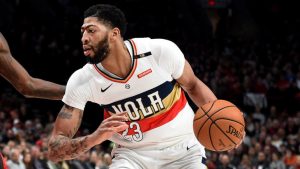Nicholas Jeffrey Ward, an American college basketball player for the Michigan State Spartans injured his hand in the Spartans win over Ohio State on Sunday, Feb. 17, 2019.
According to Ward, he injured his hand when he made contact with an opponent’s elbow. Wards’ hand was wrapped in a green tape and he did not start the second half of the game. Ward underwent a surgery later Sunday night to repair his left-hand fracture. Some of the media reports said it was a “hairline” fracture. The term “hairline” is usually meant to indicate that you can barely see the break and the bone is structurally sound. It’s not clear why someone would have surgery on such a fracture. With the exception, perhaps, of the scaphoid bone in the wrist, cracks in the hand bones tend to heal quickly without surgery.
It’s not clear when he will return. With or without surgery, hand bones need about 2-3 months to get to a level of healing where contact sports such as basketball entail limited risk (ie about 80 to 90% strength).
